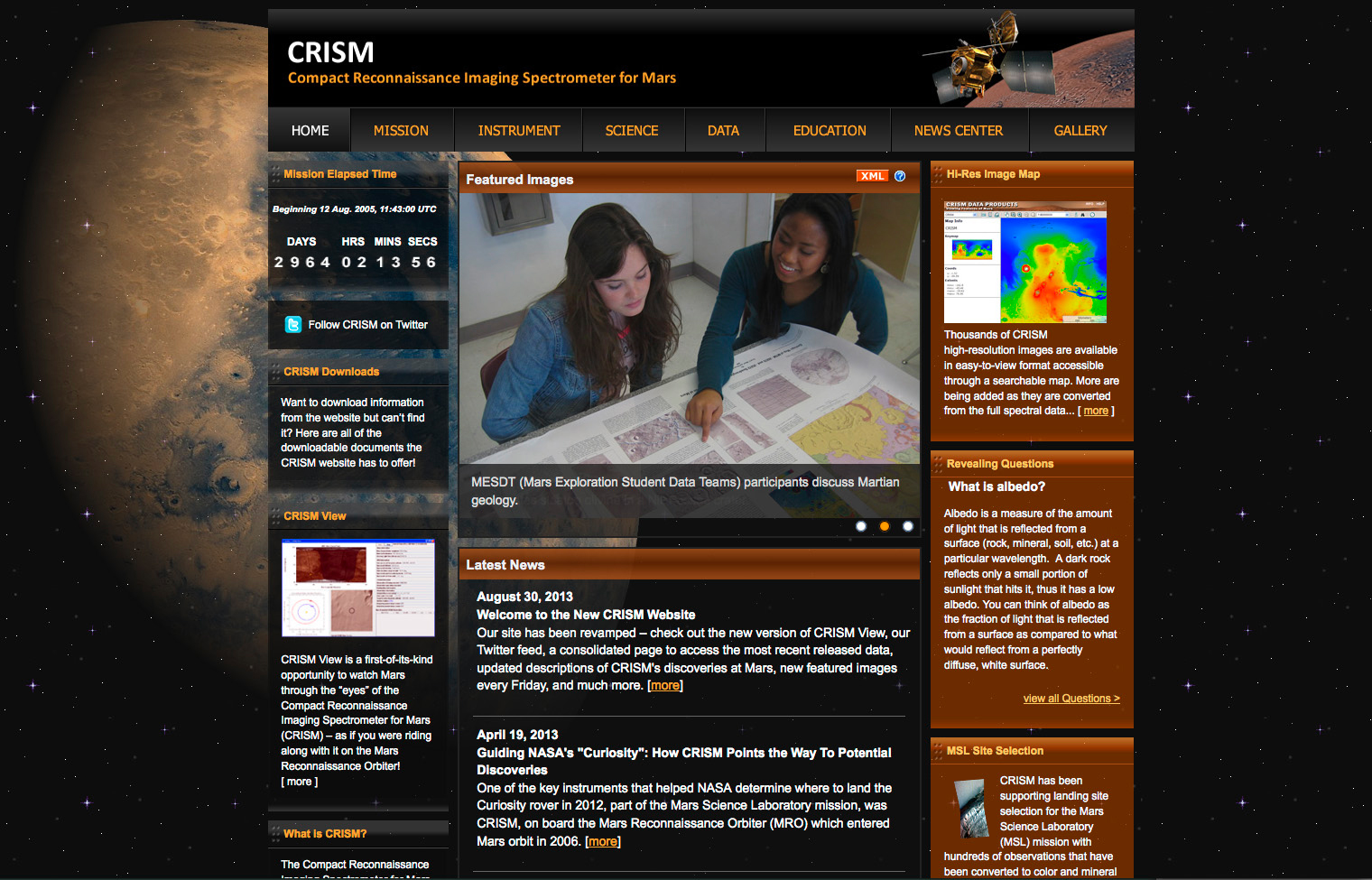Press Release
CRISM Reveals New Website
Revamped Site Highlights Data and Findings from Mars Instrument
Mon, 09/23/2013 - 10:24
A new website for the Compact Reconnaissance Imaging Spectrometer for Mars (CRISM), designed and built for NASA’s Mars Reconnaissance Orbiter (MRO) by the Johns Hopkins University Applied Physics Laboratory in Laurel, Md., is now live. The CRISM site (http://crism.jhuapl.edu/) allows both researchers and the public easier access to more than seven years of important findings from this instrument, which has acted as one of the key tools used to select Mars rover landing sites.
This site redesign was brought about by fortunate planetary alignment — literally. The small team at APL in charge of operating CRISM has spent all of its time observing Mars since MRO went into orbit in late 2006. During early 2013, the sun was between Earth and Mars, limiting activity by all Mars spacecraft and allowing the team an opportunity to refresh the site.
“We’ve been so focused on analyzing and studying the volumes of fascinating data from CRISM that it actually took a solar conjunction to give the team time to update the site,” says APL’s Scott Murchie, CRISM principal investigator. “But Web tools and utilities have evolved so much in seven years that this was a good time to make the changes.”
The website features an upgraded version of CRISM View (which provides a simulated real-time image of what CRISM is viewing on Mars), a new page that consolidates the most recently released data, updated descriptions of CRISM’s many discoveries at Mars, and new featured images every Friday. In addition to the website changes, the CRISM team is now offering more ways to engage with the instrument, through social media (via Twitter, @MROCRISM), a screensaver, educational posters, and new tutorials for researchers using the data. The team will also soon introduce the MICA (Minerals Identified through CRISM Analysis) Files, a detailed description of minerals that have been identified by CRISM on the Martian surface.
CRISM uses a technique called reflectance spectroscopy to identify minerals on the Martian surface that indicate past volcanism, the past existence of water, and other information about the planet.
APL provided and operates CRISM; Lockheed Martin Space Systems in Denver built MRO; NASA’s Jet Propulsion Laboratory in Pasadena, Ca. manages MRO for NASA’s Science Mission Directorate in Washington. For more information about NASA Mars missions, visit: www.nasa.gov/mars.
